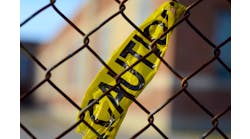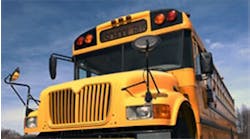Staff and students play a variety of roles in schools and universities, and many of these roles can affect security, for better or worse, according to school security consultants interviewed for this article.
Custodians and janitors, front office staff, administrators, teachers, nurses and social workers, food service, bus drivers and even students are all part of the security team. “It's vital to remember that in most situations, people in the building are the first responders, not the people outside,” says Paul Timm, PSP, president of RETA Security Inc.
Awareness is key in maximizing security effectiveness. “We can never lose by heightening awareness; whether it's making sure the school newsletter mentions a security/safety briefing, or if the school sends out the occasional e-mail. With awareness, collaboration of a safety committee and hardening your target, we can stop these situations,” Timm says.
Check out the many security roles of various members of the education community — and be sure to share these expectations with the “front lines” of school security.
Custodian/Janitor
-
Front Office Administrative Assistants/Secretaries
Remember, you are the only person who knows the building inside and out.
-
Administrators
You are not tied to students, giving you mobility in the building. With this mobility, gain knowledge of things such as how to get on the roof, where a closet leads or where someone can get hurt.
-
Teachers/Staff
You, and only you, have all key control.
-
Food Service
Learn which staff members have what keys and access to what doors at what hours of the day. And although teachers should lock the doors — you should notice if it wasn't done.
-
Nurses and Social Workers
Make sure exterior lighting is bright and lit; trim shrubs and trees; and maintain doors and door hardware.
-
Students
Be the eyes and ears of the school, and alert someone to any unusual happenings.
-
Build a relationship with the teachers. If a teacher doesn't allow students to throw trash on the floor to make your job easier, take responsibility for the teacher by noticing a room full of kids without an adult, or a wandering student.
-
If you are working at night during a non-school event, control access to the building just as you would during the school day.
-
Suggest training to your school administrators. If you are working at night, you should be trained in CPR and First Aid if there are any events in the building.
-
You are the next barrier an intruder has to break after he or she gets past the front door. So, it is vital that you check and verify all visitor IDs whether it's by paper or a technological device. There are still “parents” who come in and say they want to just “deliver something to their child.” As a gatekeeper, all things will fall apart if you don't follow the same rules for everyone.
-
Do not leave out the sign-in tools including badges and the sign-in book in reach of visitors.
-
Protect information as well as people — do this by not allowing access to the personnel directory. If someone knows his or her victim is in a certain district, but doesn't know which school, he or she can look in the directory for confirmation.
-
Everyday items you leave on your desk — scissors, a letter opener — should not be in grasp of any visitor, especially a walkie-talkie or other form of communication. If a problem individual comes in and you react by looking at the radio instinctively, they will know to steal it and shut down communications, rendering you helpless.
-
You are on the front lines: If you handle mail, learn the suspicious mail and package rules and what to do if you encounter it. The transfer of contaminated mail would come back to you. If you answer phones, keep a bomb threat checklist at arms length.
-
In case of a lockdown, do not render yourself responsible — you should not be on the sweep team. The sweep team will be made up of volunteers. Also, do not consider your desk or a near closet to be a good hiding spot. Learn where you can go that best fits your safety needs.
-
Give your students consistent discipline. If you consider constant detention enough of a punishment — remember that each time the student repeats an offense, he or she is making themselves more of a threat.
-
If you leave the school, there's a chance the rest of the school doesn't know whom to turn to in an emergency. Delineate security responsibility (before an incident occurs — not during) in your absence and keep a running tab of who manages what security function during that time. Tell your staff when to call you and when to go straight to the police.
-
There are certain policies that may enhance security, including not allowing teachers to put students' names on the walls outside of the classroom. Only you have the power to create and enforce these policies. Do not expect teachers to do it on their own without formal notice.
Teachers/Staff
-
Leave convenience in the past. Once you prop open a door to the outside to let in fresh air or take the class on a walk, the safety of the school is in your hands.
-
You should familiarize yourself with the “Wal-Mart approach.” If you see someone in the hall that you do not recognize, address him or her by asking how you can help — even if you assume they have already been authorized. You can be as much a part of visitor management as the front office is.
-
Even though an empty classroom seems to be an empty threat, there is still information left behind while you are at recess or lunch that intruders can steal and use.
-
Request training from your school in many areas. You should know how to use a defibrillator and be ready and willing to operate one. You should also be trained in current technology trends. You should know that an iPhone looks like an iPod — but a phone can be a security threat. You should know that there are some ringtones that you will not be able to hear solely based on your age. And you should know how to teach your students that putting personal information on a social networking Web site can be a danger to the school.
-
You should also request supervision and line-of-sight training. If you walk 10 students down the hall and turn a corner, did you just lose sight of the 10th student?
-
You should also be familiar with Crime Prevention Through Environmental Design (CPTED) and creating natural surveillance. For example, if your classroom windows face a parking lot, tip the shades up so people outdoors cannot see in.
-
Be aware of how easy you have made it to find a child in your classroom for a stranger. Ask yourself, if someone has already bypassed your school's screening mechanism, how will they find that child? The intruder may know the teacher's name from a conversation with the child, artwork may be placed outside the classroom or in the media center with a name on it or photos may be on display in the hallways.
-
Schools should not mark parking places with your name. This makes you a target. The intruder may not have been able to access the school — but then he or she will stay at a parking spot waiting for you after hours.
Food Service
-
Back doors are as much of a threat as front doors, and some of these doors may be located in the cafeteria. Maintain a screening system similar to the front of the school by keeping these doors locked and only open upon a doorbell system or a peephole.
-
Food can present dangers itself — think about what or who has access to it. Contamination is common around self-service bars.
-
Position self-service bars near security cameras, and position yourself in order to enhance natural surveillance.
Nurses and Social Workers
-
Keep emergency supplies in more than one location.
-
Have a list of “inventory skills” or individuals in the building who have emergency skills, such as being bilingual, being certified in CPR, having a CDL license to drive a bus or being trained in conflict resolution. Know where these people are located at all times of the school day.
Students
-
You are the largest stakeholder representation in the school. It is up to you to share information. You hear more ear-to-the-ground information than anyone else — in classrooms, hallways, bathrooms, etc. Suggest to your teachers and peers to start an anonymous tip line so that you keep yourself out of any danger. You can blow the whistle on plots.

